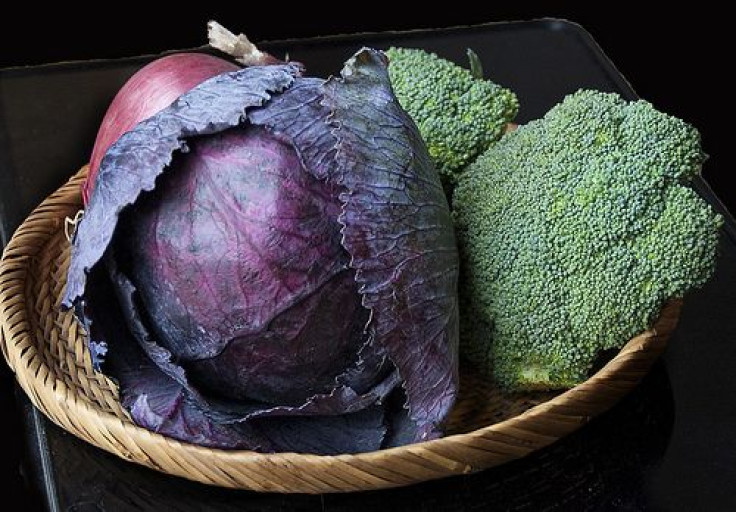Cabbage And Broccoli Compounds Could Guard Against Lethal Radiation Doses, Cancer

An ingredient from cruciferous vegetables, such as cabbage, cauliflower, and broccoli, could protect cancer patients from the harmful side effects of radiation therapy, according to a report in PNAS.
Radiation therapy’s main objective is to destroy the DNA of cancer cells. The process works because cancer cells are constantly multiplying, which means they need to replicate their DNA genomes. Exposure to high-energy radiation — X-rays, gamma rays, or charged particles — snaps DNA into pieces, which stops cancer cell replication and kills the tumor.
Radiation therapy, however, can damage DNA in normal cells, causing side effects like memory loss, scarring, and infertility. In an ironic twist, DNA breaks in normal cells caused by radiation therapy can also trigger the development of cancer. Girls given radiation to the chest for Hodgkin lymphoma have a greater risk for developing breast cancer later in life, according to the National Cancer Institute.
Researchers at Georgetown University Medical Center discovered that the cruciferous vegetable-derived compound ‘DIM’ — 3,3'-diindolylmethane — protects rodents from lethal doses of radiation. This radiation shield worked if the DIM was given prior to exposure or up to 24 hours afterwards.
"DIM has been studied as a cancer prevention agent for years, but this is the first indication that DIM can also act as a radiation protector," said senior author, Dr. Eliot Rosen of Georgetown Lombardi Comprehensive Cancer Center, who described the results as stunning.
"All of the untreated rats died, but well over half of the DIM-treated animals remained alive 30 days after the radiation exposure.”
This investigation by Rosen and colleagues goes even further to provide an explanation for why DIM is beneficial to normal tissue. They found that DIM stimulates a series of enzymes that repair DNA after radiation damage. However, this protective effect was limited to healthy tissue, and radiation could still destroy cancer tissue.
These findings have another real-life implication, which is pertinent given recent events in Japan.
"DIM could protect normal tissues in patients receiving radiation therapy for cancer, but could also protect individuals from the lethal consequences of a nuclear disaster," continued Rosen.
DIM has been a suspected cancer preventative for years. Clinical trials in humans have already been conducted and shown it is well-tolerated in cancer patients. Rosen and his co-authors have filed a patent with Georgetown University and will explore the use of DIM and related compounds as radioprotectors in future trials.
Source: Fana S, Meng Q, Xu J, et al. DIM (3,3′-diindolylmethane) confers protection against ionizing radiation by a unique mechanism. PNAS. 2013.



























